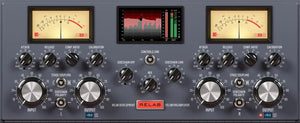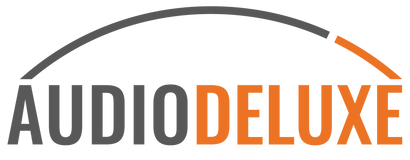Your Cart is Empty


Relab 176 Tube Compressor/Limiter
Hardware-Accurate Tube Compression In Software Form
$199.00
Description
Hardware-Accurate Tube Compression In Software Form
Accurately modeled from the entire audio circuit of a vintage 1960s 176-style compressor: every tube, transformer, timing network, and power supply interaction is re-created using a real time circuit solver. This preserves the tone, timing, and dynamic behavior of the original hardware.
- Hardware-Accurate from Input to Output: The Relab 176 reproduces everything: the tone, timing, and dynamic behavior of the hardware. Every tube stage, transformer, and timing network responds as it does in the original.
- Compression That Adapts to the Music: Fixed-threshold, variable-gain design where ratio, drive, and source material interact to shape timing, curve, and harmonics.
- Instant Control Over Tone and Transients: Switchable interstage transformer, asymmetry detection, and calibration trims allow quick changes to character and transient handling.
Every Stage of the 176, Modeled Without Shortcuts
The original 176 used a fixed-threshold, variable-gain topology that reshaped its compression curve with each ratio - smooth leveling at low settings, assertive limiting at high ones. Its tone comes from an all-tube signal path, interstage transformer coupling, and a program dependent sidechain.
The Relab 176 models the entire audio circuit in real time. Each component is re-created, so the plugin responds like the hardware:
- Tubes – Variable-gain stage and line amp with bias interactions shaping dynamics and harmonics
- Transformers – Input, output, and interstage stages modeled for saturation and frequency shaping
- Rectifiers & Timing – RC sidechain delivering program-adaptive attack and release
- Power Supply – Sag and recovery influencing timing under sustained gain reduction
Because compression in the Relab 176 emerges from a fully modeled circuit rather than a fixed transfer curve, its response is inherently musical and dynamic - timing and harmonics adapt to the source, each ratio shifts the slope and knee position, and the exact signal flow, including transformer coupling and tube stage interactions, is preserved.
Features That Preserve the 176's Sound - and Expand Its Workflow
From compression curves and harmonic behavior to transformer tone and calibration control, every element of the original 176 is modeled for authenticity, with added tools to fit seamlessly into modern production workflows.
Ratio-Driven Knee Behavior for Nuanced Dynamics
The Relab 176 follows the original fixed-threshold design with four hardware ratios -2:1, 4:1, 8:1, and 12:1. Knee position and slope change with each ratio, producing compression that ranges from smooth leveling to assertive limiting.
Compression intensity adapts naturally, ensuring nuanced dynamic shaping at every setting.
Program-Dependent Timing from True RC-Tube Interaction
Attack and release times come from resistor-capacitor networks directly coupled to the tube gain stage.
Timing is program-dependent, shaped by signal level, transient size, tube nonlinearity, and transformer interaction — not fixed millisecond values.
The Fixed/Auto toggle changes how release adapts to the program
Polarity-Selective Detection for Targeted Transient Control
The Sidechain Polarity control in the Relab 176 changes how the detector responds to the positive, negative, or both halves of the waveform. This lets you target specific transient edges - for example, clamping kick drum attack without touching low-end body, or controlling plosives in vocals without affecting overall presence.
Transformer Path for Sub-ms Attack, Resistor Path for Vintage Thump
The Stage Coupling switch changes how the variable-gain tube stage connects to the output amp:
- Transformer – Adds a transformer between stages for faster attack (sub-ms possible), subtle “smiley curve” tone, and reduced low-end wobble.
- Resistor – Uses a resistor path for slower attack, flatter tone, and more vintage-style low frequency thump.
Both are authentic circuit paths and can be chosen for transient speed, tone, and low-end behavior.
Shift Bias, Harmonics, and Threshold in a Single Move
Calibration shifts the internal tube bias and balance – just like adjusting multiple trim pots on the original hardware – changing threshold, harmonic profile, and dynamic feel.
- Bias & Balance: Adjusts 6BC8 and 12AX7 tube operating points, influencing even/odd harmonic mix and low-frequency stability.
- Threshold Shift: Moves the point where compression begins without changing your input gain.
- Dynamic Response: Alters transient smoothness and micro-dynamics.
- Tone Shaping: Warms, brightens, or tightens tone depending on bias settings.
It's a single control that moves multiple internal parameters together, with extra flexibility available via the plugin's back-panel trims.
Advanced Bias & Level Tuning
Click the Relab logo to access advanced controls: three hardware-style trim pots for 6BC8 bias, 6BC8 anode balance, and 12AX7 bias – plus a Reference Level control.
Fine-tune threshold, harmonic mix, transient response, and low-frequency stability with the same adjustments available inside the original hardware, now with greater flexibility for gain staging and tone shaping.
How the Relab 176 Fits Into Modern Sessions
From vocal tracking to final mastering, the 176's hardware-accurate behavior delivers the tone, dynamics, and control that engineers rely on across every stage of production.
- Vocals – Maintains presence while controlling dynamics; harmonics scale with level for depth without dulling articulation.
- Mix Bus – Gentle peak control for cohesion; transformer mode adds weight, resistor mode stays cleaner.
- Individual Instruments – Program-adaptive timing and asymmetry control allow targeted transient shaping; drums retain sustain, bass stays even, guitars gain harmonic presence.
- Mastering – Smooth harmonics with precise gain control; calibration and reference level fine tune headroom and harmonic profile.
Features
- Authentic 1960s Circuit Emulation – Models the full audio path of a vintage 176 compressor, including tubes, transformers, timing, and power supply.
- Real-Time Circuit Simulation – Uses a real-time solver for accurate dynamic and harmonic response, not just static modeling.
- Variable-Gain, Fixed-Threshold Design – Compression behavior changes with ratio, drive, and signal, allowing musical, adaptive control.
- Transformer Path Options – Switch between resistor (vintage thump) and transformer (fast attack, brighter tone) for tonal flexibility.
- Polarity-Selective Detection – Choose waveform polarity (positive, negative, both) for precise transient shaping and control.
- Program-Dependent Timing – Attack and release react dynamically to signal characteristics via modeled RC-tube interaction.
- Ratio-Driven Knee Control – Four hardware ratios (2:1 to 12:1) change compression curve slope and knee behavior.
- Single-Knob Calibration Control – Simultaneously adjusts tube bias, harmonic profile, threshold, and dynamic feel.
- Advanced Trim Section – Access hidden controls for deep tube bias and level fine-tuning, mimicking internal hardware adjustments.
- Versatile Use Cases – Ideal for vocals, instruments, mix bus, and mastering with musical tone and flexible dynamics control.
Tech Specs
Mac requirements (64-bit only):
OS X (10.15 or higher), Intel processor, M1 processor, 2GB of ram.
Compatible host application:
– Logic Pro: 10.x
– Pro Tools: from version 11.3.2 and up
– Cubase 9.5 and up
– Nuendo: 8 and up
– Live: 9 and up
Win requirements (64bit only):
Windows 10 or higher, Core 2 or higher, 2GB of ram.
Compatible host application:
– Pro Tools: from version 11.3.2 and up
– Cubase 9.5 and up
– Nuendo: 8 and up
– Live: 9 and up





